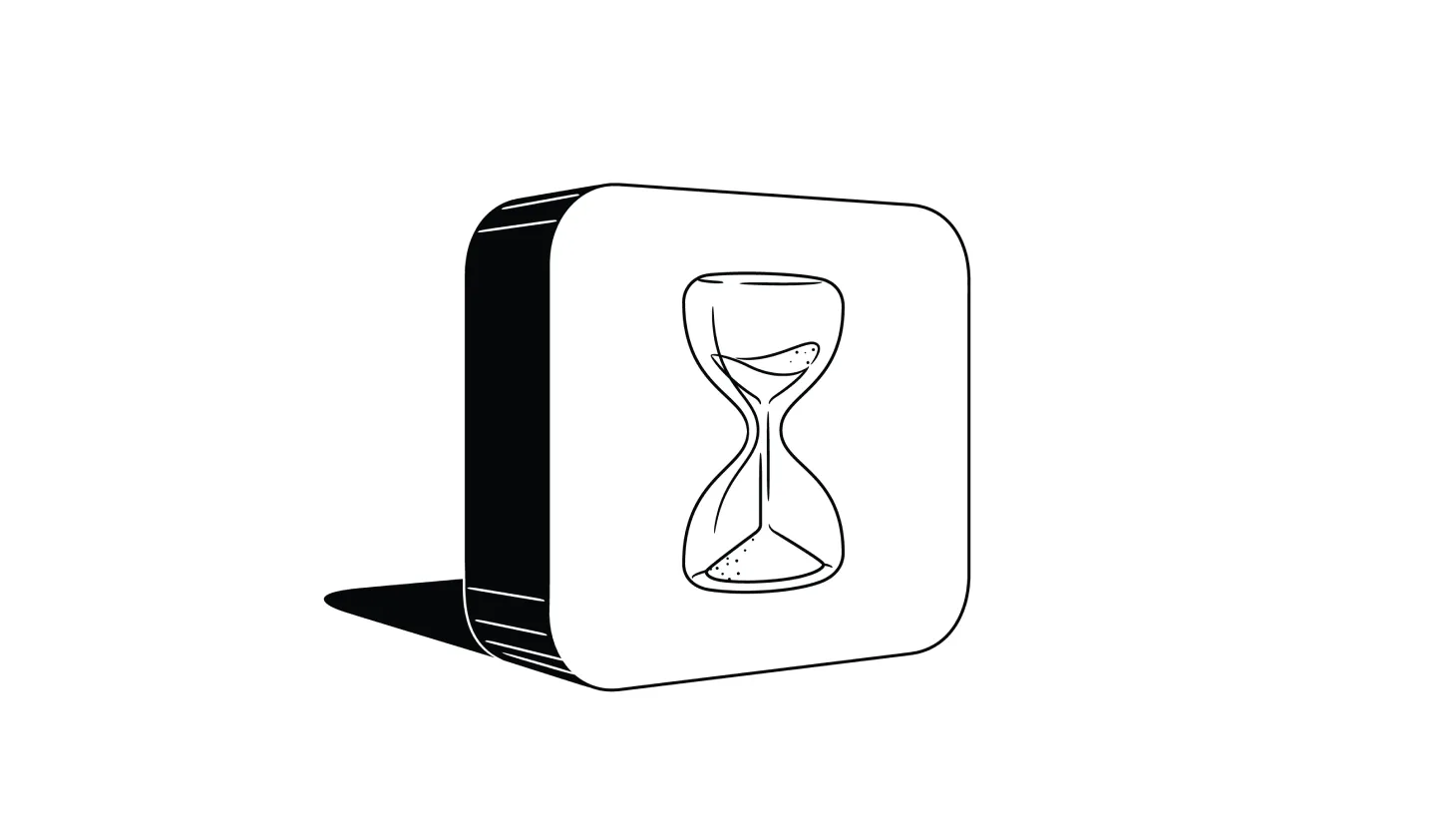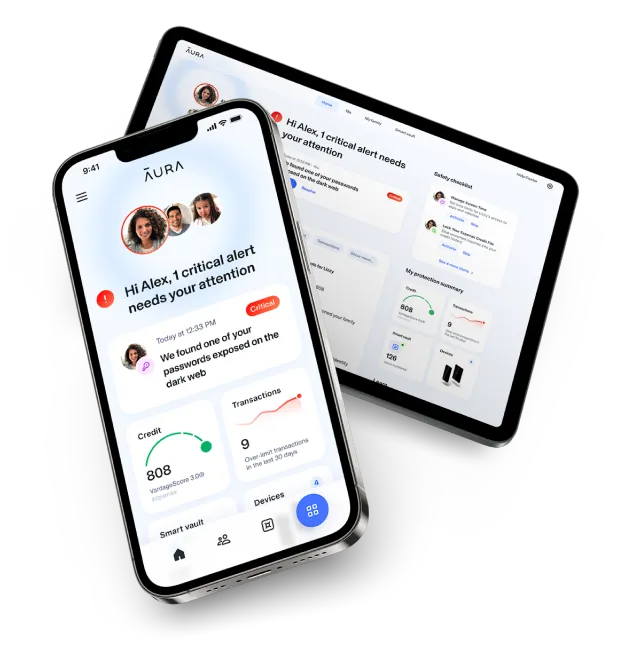In this article:
How To Set Time Limits on Apps To Control Screen Time
Whether you’re trying to control your child’s screen time or your own, setting time limits can be a powerful tool — if you know how to do it properly.
Whether you’re trying to control your child’s screen time or your own, setting time limits can be a powerful tool — if you know how to do it properly.

Can You Restrict How Long Apps Can Be Used Each Day?
Whether or not you believe that smartphones are truly addictive, there’s no denying that sometimes we spend more time than we’d like to when using specific apps. Increased screen time takes away from other activities and interests — and can be especially dangerous for children who are prone to spending long hours on apps, games, and devices.
According to a 2023 Pew Research Center survey [*]:
Nearly half of all parents think their children spend too much time on their phones — with 75% making limiting screen time a priority.
The good news is that whether you want to limit your own or a younger family member’s screen time, there are multiple tools and methods available to help. The challenge, however, is finding one that can't be ignored — or evaded.
In this guide, we’ll explore the top tools that help limit app usage on Apple, Android, and your child's devices. We'll show you how to activate these tools and will also highlight any of their shortcomings.
{{show-toc}}
How To Set App Time Limits on Your Child’s Devices
For families, screen time is more than a productivity issue.
A 2023 Gallup survey found that more than half of teens spend over four hours a day on social media apps like TikTok and Snapchat alone [*]. All that screen time means less time devoted to schoolwork, family, and other hobbies.
Here are the best methods for setting app time limits on your child's devices:
Now we’ll look at each method in more detail, including set-up instructions and considerations.
1. Use Aura parental controls (iOS and Android)
Available on all iOS and Android devices, Aura's parental controls let you manage your child's device and limit what apps they can access and how often they can use them.
You can block, limit, and filter apps, websites, and content categories on their devices. Aura uses a virtual private network (VPN) to monitor and limit devices, so kids can't easily get around the restrictions — and you'll be notified if they try.
How to use Aura to set app time limits:
- Go to Parental Controls > Ready.
- Choose the appropriate device, and follow the prompts.
- When installing Aura on your child's device, click on Allow VPN for the parental controls to work.
- Select Content Filter to block specific apps, websites, and categories.
- Select Time Limits to set daily screen time and specific app usage limits.
What you should know: With Aura, you receive a full identity theft protection and digital security package in addition to parental controls. For that reason, the service comes with a monthly or annual fee.
2. Set up Screen Time on your child’s iPhone or iPad
Whether using it directly on your child's iPhone or iPad or remotely from the Family Sharing center, Apple's Screen Time allows you to set time limits on apps, block apps completely, and schedule downtime for your kids. You can also set content restrictions on their apps, websites, and games.
How to use Screen Time to set app time limits:
- From your iOS device: Go to Settings > Family > Add Member button > Invite Others to connect your child's device, and follow the prompts.
- From your child's device: Go to Settings > Screen Time (turn it on if you haven't already) > This is My Child's [Device] > enter a Screen Time Passcode.
- Click on App Limits for app time limits, Content & Privacy Restrictions to block certain apps, or Downtime to lock down the device for a chosen length of time.
What you should know: Screen Time lacks the advanced controls of other parental control apps, and there are workarounds that your child can use to override app restrictions.
3. Enable Google Family Link on your child’s Android
Available on all Android devices, Google Family Link helps you monitor, secure, and protect your children's devices. The Family Link parental controls allow you set daily limits on your child's app usage, create a weekly screen time schedule, and block entire apps outright. You can even control the app permissions on your child's device.
How to use Google Family Link to set app time limits:
- Go to the Family Link > Menu > Add child and follow the prompts.
- Select your child’s name, and click on Controls to set a Daily limit or Edit weekly schedule.
- Click on App Limits to choose specific apps to block, or select Downtime to shut your child out of the device for a set period of time.
- You can also manage these settings from your child's device by using Digital Wellbeing & parental controls.
What you should know: Google Family Link lacks some of the advanced app schedule controls and content restriction filters offered by other providers. For example, you can only filter out mature content and nothing more.
How To Set App Time Limits on iPhones, iPads, and Macs
If you use Apple devices, you have several options available to you for limiting the amount of time you spend on your phone, including built-in and third party tools.
Here are the best methods for setting app time limits on your Apple devices:
Now, let’s examine each method in detail — highlighting how it works, how to set it up, and what limitations you should be aware of.
1. Set App Limits in Screen Time
All Apple devices with iOS 12 or MacOS 10.15 or later come with Screen Time, a feature that helps users track and manage their device usage [*]. By using App Limits within Screen Time, you can set daily time limits or a custom schedule for individual apps or a category of apps, such as social or gaming apps.
How to set App Limits by using Apple Screen Time:
- Go to Settings > Screen Time > App Limits. You may be asked to enable Screen Time or App Limits if you haven’t already.
- Tap on Add Limit and select the apps or categories you wish to set screen time limits for, and then select Next.
- Set the daily time limit, or select Customize Days to create different limits for certain days of the week.
- Select Add.
What you should know: While App limits send notifications when you approach or reach your set limit, the feature doesn't block the apps. You can simply click on Ignore Limit to extend your app timer or cancel the limit for the day.
2. Set up Downtime in Screen Time
Downtime is another feature in Screen Time that allows you to block out screen time during certain periods. During a Downtime session, only selected apps and contacts will work or be able to reach you via calls and messages.
How to set up Downtime in Apple Screen Time:
- Go to Settings > Screen Time > Downtime.
- Select Turn On Downtime Until Tomorrow or Scheduled to set custom down times.
- If you choose Scheduled, you can set From and To times for Every Day or only certain days with Customize Days.
- Return to the Screen Time page, and click on Always Allowed to choose which apps will be available during the downtime.
What you should know: Like App Limits, Downtime relies on your self-discipline. You might also miss important calls or messages if you have blocked messaging apps and contacts.
3. Set up a Focus session
While it’s not necessarily made to limit screen time, Apple’s Focus settings can help block distractions on your phone when you’re trying to get things done. When enabled, Focus shuts down notifications from apps, messages, and calls when the mode is activated.
You can customize the permissions and Share across devices that use your Apple ID — even your Apple Watch.
How to set up a Focus to limit app usage:
- Go to Settings > Focus.
- Choose a preset Focus, or create a custom Focus with the Add icon.
- Select the apps and people that you want allowed or muted.
- Click on Options to set how the tool will handle notifications.
- Click on Add Filter for further customization options.
What you should know: While Focus mutes notifications sent from apps, it doesn't actually block any apps.
4. Use AppBlock or other productivity apps
Outside of Screen Time, there are several third-party tools in the Apple App Store that can help you block specific apps and notifications and create custom screen time schedules, including AppBlock. You'll need to turn off AppBlock to access blocked apps, and you'll get a reminder of how many times you tried to open the blocked apps.
What you should know: AppBlock and other third-party app blockers may not have full control over all apps in Apple devices, which could cause blocking challenges. Furthermore, the free versions of these apps can be quite limited.
How To Set App Time Limits on Android
Android devices give you several built-in options to limit your app usage and screen time, along with a variety of third-party tools.
Here are the best methods for setting app time limits on your Android devices:
Now, let’s look at what each method entails, how to set it up on your device, and some things to consider.
1. Use Google’s Digital Wellbeing controls
Running on all Android phones with Android 9.0 or later [*], Google's Digital Wellbeing tools help you control the time you spend on your phone and on specific apps. You can get an overview of your usage and set daily timers for each app — which will block the app when it runs out. You can also set a site timer for websites that take up your time.
How to use Digital Wellbeing to set app time limits:
- Go to Settings > Digital Wellbeing & parental controls.
- Select App timers and choose the app, apps, or app categories you want to limit, and then click on Set timer.
- Set your time limit and the days when you want the limit to be enforced, and select Done.
What you should know: The schedule customization features are rather limited through Digital Wellbeing, and Google warns that not all apps and sites work with app timers [*].
2. Set up Bedtime mode
Part of the Digital Wellbeing package, Bedtime mode can be found on devices running Android 10 and later. This tool encourages healthy sleep habits by silencing your phone and dimming your screen during the hours when you should be sleeping. Bedtime mode also comes with a Do Not Disturb feature that mutes calls, messages, and notifications.
How to use Bedtime mode to set app time limits:
- Go to Settings > Digital Wellbeing & parental controls > Bedtime mode.
- Set your Bedtime routine settings and preferences, including enabling or disabling Do Not Disturb mode.
- Choose Turn on manually for a set period of time, or Turn on automatically at a specific time.
What you should know: When using Do Not Disturb mode, you may miss important calls and messages. However, enabling Repeat callers will allow calls from the same number if they call multiple times in a 15-minute period.
3. Enable Focus mode
Similar to Apple’s features, Android Focus mode helps you eliminate distractions during the times you need to concentrate by pausing individual apps or groups of apps quickly.
How to use Focus mode to set app time limits:
- Go to Settings > Digital Wellbeing & parental controls > Focus mode.
- Choose a mode, or create a custom one with Add mode.
- Select Stay focused > Restrict app usage.
- Select the apps you don't want paused — all others will be disabled.
- Choose Turn on manually to set a timer, or Turn on automatically to set a schedule.
What you should know: Focus mode can block you from accessing an app with a single click, but you can quickly turn off the feature by clicking on Settings. You also need to activate Do Not Disturb to block calls, messages, and Play Store notifications.
4. Use a third-party app “locker”
While most people use them for additional security, app lockers can help limit your app usage by making it more difficult for you to access apps.
Some app lockers allow you to create a custom schedule, which locks the apps during certain hours. When you try to access them, you will be asked for a unique passcode — reminding you that you're trying to reduce your screen time.
What you should know: App lockers act as an obstacle to app usage, but they don't completely lock you out of the app. Some third-party app lockers can also slow down the performance of your device.
📚 Related: The Best Apps For Controlling Screen Time Right Now →
The Bottom Line: Restricting Screen Time Doesn’t Have To Be Hard
Limiting the time you and your children spend on apps can help you stay focused on the more important things in life. With so many distractions at our fingertips, this seems like a difficult task, but it doesn't have to be.
Most of our devices now come with built-in features that can help limit app usage. You can also take manual steps to build self-control and discipline — such as reviewing your screen time reports each week, adding a screen time widget to your home screen, or turning off app notifications to eliminate distractions.
Whether you use Screen Time from Apple, Google Family Link, or a manual method, it won't be as effective as a third-party provider.
With an all-in-one solution like Aura, you get parental controls that include app and website blocking, time limits, and filters — plus Safe Browsing and gaming tools along with comprehensive identity theft protection for everyone in your family.
Editorial note: Our articles provide educational information for you to increase awareness about digital safety. Aura’s services may not provide the exact features we write about, nor may cover or protect against every type of crime, fraud, or threat discussed in our articles. Please review our Terms during enrollment or setup for more information. Remember that no one can prevent all identity theft or cybercrime.













